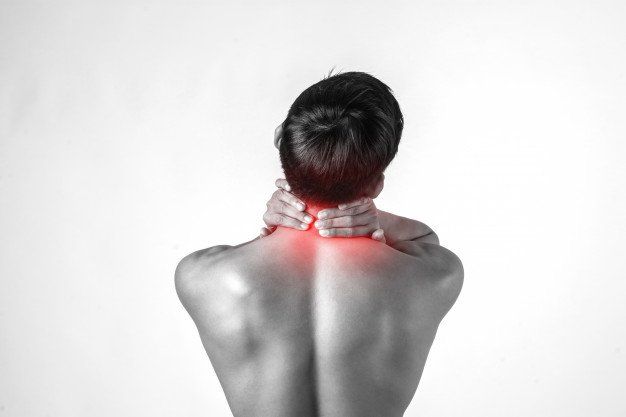Cervical osteoarthritis: Definition, diagnosis and treatment
¿Qué cervicoartrosis o artrosis cervical?
La columna cervical está constituida por 7 vértebras apiladas y separadas por discos, con excepción de la primera y la segunda (C1-C2). En medio de la columna vertebral se encuentra el canal raquídeo que contiene la médula espinal.
Osteoarthritis is a disease that causes joint stiffness and thickening. In the case of the cervical spine, the formation of osteophytes (parrot beaks) and disc deformities progressively reduce the diameter of the spinal canal. This narrowing causes aggressive compression of the cervical spinal cord, as well as the nerve roots serving the upper limbs, a condition known as myelopathy due to cervical osteoarthritis.
This age-related pathology can be exacerbated by a constitutionally narrowed cervical canal. It can occur at one or more cervical levels.
Symptoms of cervical osteoarthritis
The symptoms of cervical osteoarthritis will appear progressively over several months and generally with one or more of the following manifestations:
• Sensación de hormigueos o de pinchazos (parestesias)
Causes of cervical osteoarthritis
The main cause of cervical osteoarthritis is aging. However, cervical osteoarthritis is also associated with neck injuries and congenital abnormalities.
Cervical osteoarthritis myelopathy is also attributed to people with certain professions that generate stress on the neck, as this can lead to cervical spine wear and tear.
Non-surgical treatment for cervical osteoarthritis
There is no specific treatment to reverse cervical osteoarthritis, however, the pain resulting from it can be treated.
Pain can be treated with rest, analgesics, and anti-inflammatory drugs, which may or may not be prescribed in combination with physical therapy rehabilitation.
At the Biziondo Spine and Trauma Unit, we offer specialized physiotherapy for spinal problems, as well as various treatments that can help reduce neck pain caused by osteoarthritis.
If I have cervical osteoarthritis, do I need surgery?
It should be noted that if the cause is not treated correctly and only the pain is treated, this disease will continue to progress with increasingly severe reduction in the cervical spinal canal. A worsening of functional capacity may occur, associated with increasingly intense and debilitating symptoms.
The speed of this progression varies greatly, often being slow and very rarely rapid. In the event of an accident or fall, a significant and severe deterioration or decompensation is very possible.
What is the goal of cervical osteoarthritis surgery?
La cirugía para cervicoartrosis tiene como propósito liberar las estructuras neurológicas, incluidas la médula espinal y los nervios de la compresión por el disco o por el hueso, realizando un recalibraje de canal(abriendo el canal que ha estado estrecho).
In this way, we can halt the progression of the disease and, if possible, significantly improve the symptoms present, depending on the degree of disease progression.
What does surgery for treating cervical osteoarthritis myelopathy involve?
There are different types of surgery for cervical osteoarthritis that can be proposed:
Cervical surgery with disc prostheses
Remember that these articles are for informational purposes only. If you experience neck pain, consult your spine specialist for further guidance on your spinal problem.
We can help you with your spine problem
Solicita hoy tu consulta online gratuita para valorar tu caso.
💡 Remember: For more advanced treatments, you may need to visit one of our clinics in Spain.




